The Shetland Islands are a magical landscape:
no wonder they make wonderful wool there !
no wonder they make wonderful wool there !
Amazing how time flies when you are having fun ! All the February clubs are almost ready to ship, all that is left to do is two full on days of making the club batts and packaging everything. There was lots of dyeing again this week, not so much spinning, because , let’s face it, its very hard to be in two places at the same time. I wish I could be sometimes, but that would be a bit spooky….lol
Anyway, Lots has been going on again and slowly but surely I am trying my best to get organized for the first show coming up for me: the handknitters and Crochet guild of Victoria and their fabulous Yarn and Fibre Fair at the Coburg Town hall over no less that TWO whole days in May : May 14th and 15th. Please follow me on Insta and facebook because there will be heaps of extra fluffy and yarny bits of information on there, you do not want to miss!
Here’s the link to book your tickets (bookings open from March the 1st) :
https://www.trybooking.com/BXIYL
Please dont forget the sign ups for the next clubs are open: all the information after this week's hand dyed blend offerings.
So, what is going on, on this blog? One of my absolute favourite blends of all time : My Shetland Dream blend with a gorgeous fine Shetland blended with Mulberry Silk and a dash of super soft Cashmere.
I am still dreaming of going to the Shetland Wool week in my life time, but in the meantime I am armchair travelling and reading lots of fabulous Shetland stories and hoping to be as accomplished as I can knitting colourwork and spinning beautiful Shetland fibres. I am a big fan of colourwork and all things Scotland, including the books by Ann Cleeves and the tv series “Shetland”..of course !

The story of Shetland wool and textiles is intricately entwined with the people and the place. Remote and rugged, Shetland’s ancient landscape has been home to the unique sheep and inspired craftspeople for centuries. Textiles have been key to the shaping of Shetland’s society, economy and culture and the story continues to this day!
Shetland has something that makes it truly stand out amongst other places - there’s a rich, vibrant knitting, spinning and textile scene and the industry has been revitalized in the last decade. People care more about the provenance of their clothing, are interested in hand made and the stories that it holds. A decade ago, not many people would have imagined that knitting and spinning would go through such an incredible resurgence and that Shetland and Shetland sheep would once again become a very important place.
Sheep have lived on the Shetland Islands for well over 1,000 years, adapting to the harsh environment and thriving in the cold, wet climate.
The sheep of Shetland were an important part of subsistence agriculture of the islands, and the rugged habitat and geographical isolation produced a breed that is distinct and significant. The Shetland breed likely descends from ancient Scandinavian sheep, and it is a member of the northern short tailed sheep breed family. Historically, only a few Shetland sheep were exported, and it was not until recently that large populations were established on the British mainland and in other countries. Though fleece continues to be the breed’s primary product today,
Shetland sheep are fine boned and small in size. Rams weigh 90–125 pounds, and ewes weigh 75–100 pounds. Most rams have spiraled horns, while most ewes are polled. Shetland sheep are calm and charming in disposition, docile, and intelligent. The Shetland breed is especially prized for its wool, which is fine, soft, and strong. Fleeces average two to four pounds and vary in crimp from wavy to straight. Other characteristics of the fleece vary according to recent selection history.
Populations of Shetlands in Britain, for example, have been selected for more standardized characteristics. These sheep tend to be single coated with fiber diameter averages of 23 microns and staple lengths of two to five inches.
Landrace populations, such as those on the island of Foula, include a greater range of fleece types. These sheep may be double coated, with coarser outer wool of 30-40 microns and finer inner coat wool of 12-20 microns.
Eleven colors and thirty color patterns are recognized in the Shetland breed. This diversity is a great asset both to the breed and to the fiber artisans who enjoy using its fleeces. A few importations of Shetland sheep are documented in North America during the past two centuries. For example, Thomas Jefferson, owned a small flock of Shetland sheep at Monticello. None of the historic flocks, however, survived as purebred populations. Most Shetland sheep in North America descend from a 1980 importation of 32 sheep by the late G.D. Dailley of Ontario, Canada.
Unfortunately there are no Shetland Sheep in Australia. I have been very fortunate to secure this supersoft batch of 18,4 micron Shetland which is truly extraordinary to spin, felt, knit and wear.


The story of Shetland wool and textiles is intricately entwined with the people and the place. Remote and rugged, Shetland’s ancient landscape has been home to the unique sheep and inspired craftspeople for centuries. Textiles have been key to the shaping of Shetland’s society, economy and culture and the story continues to this day!
Shetland has something that makes it truly stand out amongst other places - there’s a rich, vibrant knitting, spinning and textile scene and the industry has been revitalized in the last decade. People care more about the provenance of their clothing, are interested in hand made and the stories that it holds. A decade ago, not many people would have imagined that knitting and spinning would go through such an incredible resurgence and that Shetland and Shetland sheep would once again become a very important place.
Sheep have lived on the Shetland Islands for well over 1,000 years, adapting to the harsh environment and thriving in the cold, wet climate.
The sheep of Shetland were an important part of subsistence agriculture of the islands, and the rugged habitat and geographical isolation produced a breed that is distinct and significant. The Shetland breed likely descends from ancient Scandinavian sheep, and it is a member of the northern short tailed sheep breed family. Historically, only a few Shetland sheep were exported, and it was not until recently that large populations were established on the British mainland and in other countries. Though fleece continues to be the breed’s primary product today,
Shetland sheep are fine boned and small in size. Rams weigh 90–125 pounds, and ewes weigh 75–100 pounds. Most rams have spiraled horns, while most ewes are polled. Shetland sheep are calm and charming in disposition, docile, and intelligent. The Shetland breed is especially prized for its wool, which is fine, soft, and strong. Fleeces average two to four pounds and vary in crimp from wavy to straight. Other characteristics of the fleece vary according to recent selection history.
Populations of Shetlands in Britain, for example, have been selected for more standardized characteristics. These sheep tend to be single coated with fiber diameter averages of 23 microns and staple lengths of two to five inches.
Landrace populations, such as those on the island of Foula, include a greater range of fleece types. These sheep may be double coated, with coarser outer wool of 30-40 microns and finer inner coat wool of 12-20 microns.
Eleven colors and thirty color patterns are recognized in the Shetland breed. This diversity is a great asset both to the breed and to the fiber artisans who enjoy using its fleeces. A few importations of Shetland sheep are documented in North America during the past two centuries. For example, Thomas Jefferson, owned a small flock of Shetland sheep at Monticello. None of the historic flocks, however, survived as purebred populations. Most Shetland sheep in North America descend from a 1980 importation of 32 sheep by the late G.D. Dailley of Ontario, Canada.
Unfortunately there are no Shetland Sheep in Australia. I have been very fortunate to secure this supersoft batch of 18,4 micron Shetland which is truly extraordinary to spin, felt, knit and wear.
The Shetland Islands were originally settled by Neolithic farmers over 4500 years ago. The horns of the sheep they raised have been found in archaeological digs on the islands, providing evidence of their presence.
When the Vikings invaded and settled the Shetland Islands around the year 800, they brought over some short-tailed sheep from their continental herds, which interbred with the local sheep to produce further variation in an already hardy breed.
By the year 1200, farmers began breeding the sheep of the Shetland Islands with some of the long-woolled sheep that had been brought north by the Romans. Either by accident or on purpose, this developed wool that was both longer and softer, and was therefore quite desirable for woolen goods that could both be used at home and that could be traded.
In 1468, the Shetland Islands were mortgaged to Scotland to raise a dowry for the marriage of Margaret, a Danish princess, to James III of Scotland. A few years following the marriage, the Scottish decided to just go ahead and annex the islands. Despite the protests of the Danes, they succeeded and the Shetland Islands became a part of Scotland. Trade in wool from the Shetland Islands was already occurring by this point, although it was likely happening only with Scotland and the Nordic countries. However, by the early 1600s knitted stockings from Shetland sheep wool, well known by then for its softness and comfort, were available through trade to the English and the Dutch populations.
In 1707 the Shetland Islands officially became a part of the Kingdom of Great Britain when the Acts of Union united England and Scotland as one country. At this time, wool from Shetland sheep was already widely known as a quality wool that was already softer than much of the other wool that was available. Except, of course, for the wool from Spain’s Merino sheep, which was highly regarded throughout Europe as the softest wool available on the market.
As the late 1700s arrived, Great Britain set their sights on disrupting Spain’s firm grip on fine wool market.
It is important to understand that the wool industry in Europe during the 1700s and early 1800s was as beneficial to a country’s economy as industries such as steel, aluminum and technology are today. A country that could produce fine wool in great quantities was a country that would have a solid financial base, and with a solid financial base came power and influence. Great Britain wanted to be that country, and believed that by acquiring Spain’s Merino sheep to breed with their own, the British wool industry would as least be equal to Spain’s – if not outright exceed that of Spain’s. Unfortunately for Great Britain, Spain simply didn’t want to give them any Merino sheep. Spain tightly controlled their Merino sheep and while Spain had made gifts of Merino sheep to some countries beginning in 1735, England was not on their list. Who could blame them? Prior to Spain’s development of Merino sheep, the English had been dominant players in Europe’s wool industry and Spain certainly did not want them to regain their position in the wool market.
Enter King George III of Great Britain, Sir Joseph Banks, and Sir John Sinclair.
By the 1880s, King George III had commanded Sir Joseph Banks to either find or develop a sheep that could compete the Spanish Merinos. At this point in history, a revolution in English sheep breeding using methodical, scientific and selective techniques had been going on within Great Britain for a couple of decades (see the article on Bluefaced Leicester). So, King George III and Banks had good reason to believe that by identifying and breeding just the right sheep, they could come up with something that would allow Great Britain to compete with Spain’s wool industry. With Merinos unavailable, Banks looked around the globe for sheep that would be suitable for wool-improvement purposes, even going so far as to examine sheep from Tibet.
Sir John Sinclair of Scotland, a friend of Banks, had identified Shetland sheep as a promising breed. King George III was already a fan of having his stockings made of Shetland wool. The question was, could Shetland sheep be bred for the qualities the British wanted to have without Merinos, or would Merinos be required? Banks and Sinclair began a long correspondence by letters during the late 1780s through the 1790s exploring the possibilities. Sinclair sent samples of Shetland wool to Banks, but Banks was doubtful that the samples being sent to him, while fine and soft, were representative of the entire breed. He had noted that “stichel hairs,” longer and coarser hairs, were found in samples procured elsewhere. In fact, this was because many of the Shetland sheep of the time, like Icelandic sheep, were double coated and could produce both fine and thicker wool. Some Shetland sheep today still retain this trait.
Sinclair pressed Banks for many years to consider Shetland sheep as what Great Britain needed to breed for fine wool, describing what he referred to as the “kindly breed” of Shetland, or Shetland sheep that did not have the double coat with longer hairs that Banks disliked. He gifted Shetland wool to Banks that was “properly dressed and prepared” to exclude the long, rough hairs, making sure to include separate samples for Banks’ wife. He continually sent letters to Banks reassuring him that many of the Shetland sheep were free from the dreaded “stitchel hairs,” and then sent more letters discussing how he was looking at sheep from Denmark without long, coarse wool that might be bred with the Shetland to further reduce that trait. In another letter he describes how it is the method of gathering wool that produces the soft locks that Sinclair is looking for – Shetland sheep at the time, and many even today, will molt which allows the wool to be plucked off of the sheep. Sinclair let Banks know that this process, called rooing, meant that the wool was sorted between the fine wool and coarse wool as the plucking occurred.
Despite all of Sinclair’s efforts, Banks was unconvinced that Shetland sheep were the answer. He continued to look for ways to get Merino sheep to breed with the sheep of Great Britain, which he was certain was the solution to improve the wool qualities in British flocks.
In 1787, Banks managed to get two Merino rams and four Merino ewes out of Portugal, which became the base of the royal flock. Around this time, it can been seen from Sinclair’s letters that he gave up on the quest to convince Banks that Shetland sheep were the way of Great Britain’s future. Instead, Sinclair began to focus on breeding newly acquired Merinos from the royal flock to other sheep, and the Shetlands’ moment of glory began to fade. The Shetlands, like several other breeds of British sheep from that time, started to disappear as interbreeding for wool improvement resulting in the development of other lines of sheep.
By the early 1920s, there were not many purebred Shetland sheep left.
The wearing of Fair Isle sweaters by the British royal family in the early 1920 may have saved Shetland sheep from extinction. Fair Isle knitting is a stranded colourwork technique named after Fair Isle, one of the Shetland Islands, where distinctively patterned sweaters were knit using the technique.
These sweaters began their rise to popularity in 1921, when the Prince of Wales (later Edward III) wore his in public. Knitted mainly with the many hues of naturally colored wool produced by the sheep of the Shetland Islands, along with some dyed wool accents, these sweaters began to become immensely popular with the broader public.
The Fair Isle sweater hit the height of its popularity in the 1950s, although by that point it was often just the technique and design that made a sweater a Fair Isle sweater; it was no longer necessarily expected that the wool of the sweater be from the Shetland Islands, although if it was it did give the sweater that extra authenticity.
With the burgeoning popularity of Fair Isle sweaters, it is perhaps not surprising that a group of 1920s Shetland islanders were motivated to preserve the few remaining lines of Shetland sheep.
The Shetland Flock Book Society started in 1927, and around the same time the government was approached for assistance. The Department of Agriculture for Scotland agreed to support the effort by providing subsidies for purebred Shetland rams. The breed recovered slowly, though. Even the Fair Isle sweaters that were still knitted in the Shetland Islands during the 1950s did not necessarily use wool from the Shetland breed of sheep – there were still too few purebred Shetland sheep around, and the style of the day required bright dyed colors rather than the variety of natural colors provided by Shetland sheep – and dyed wool could be gotten from any sheep with white wool, not just white-wooled Shetland sheep.
By 1977, Shetland sheep were still listed as an endangered breed by the Rare Breed Survival Trust. However, interest in the sheep blossomed over the next several years, and by 1985 Shetland sheep were removed from the endangered breed list. It was perhaps not coincidental that the 1980s also marked the time during which Shetland sheep became popular among small farmers in United States. Although a few Shetland flocks had existed in the U.S. prior to the 1920s, it wasn’t a popular breed in the country until the 1980s, a time when many farmers in the U.S. were experiencing a renewed interest in rare breeds.
A few Shetland flocks are on record as having existed in the United States during the early 1900s. However, from 1921 until the 1980s, Shetland sheep were not allowed to be imported to the United States, which prevented U.S. farmers from acquiring Shetland sheep during those decades. Today, though, a number of U.S. farmers are making up for lost time by raising Shetland sheep. It is a rare county fair, state fair, or fiber animal show that does not include these adorable little sheep among its ranks of livestock.
Shetland sheep come in a wide variety of marking and colors – they include white sheep, black sheep, and a wide range of browns and grays. As a heritage, unimproved breed, Shetland sheep have one of three different kinds of fleeces: kindly/single-coated, long, and double-coated. The kindly/single-coated is the finest and shortest of the fleeces at only about 2-4 inches in length; it is used for fine knits such as lace, shawls and finely worked socks. The long fleeced Shetlands with soft and long staple wool between 4-8 inches in length are the most common these days, and much of the available yarn on the market is spun from their fleeces.
The double-coated Shetland sheep are even more versatile than that of either of the other types, having a remarkably soft undercoat of wool and long and lustrous outercoat of wool that can reach lengths between 6-10 inches or more. The coats of the double-coated sheep can be separated, or spun together. Generally, Shetland wool has a thickness of 23-25 microns, but is can be even finer or thicker depending upon where it is gathered from the sheep. Wool between 10-20 microns can be gathered from the neck and shoulders, while wool between 25-30 microns can be gathered from the britches. Like Merino, many people who find wool to be irritating to their skin discover that wearing clothing made from the wool of Shetland sheep to be quite comfortable and not itchy at all. The wool is graded from Fine at its smallest diameter of 10 microns to Medium at its largest diameter of 30 microns, making it a very comfortable wool to wear.
Please don't hesitate to contact me at any time if you have any questions okay? Always happy to enable. All my contact details are to be found at the end of this week’s blog entry. Have fun !!!
IxCHeL Super soft Silky Shetland Tops
Super soft Shetland , Mulberry silk , Cashmere
100+gram top
 |

Oh You Peerie Pretty Things 2 left
 |
 |
Stormy Seas (dyed with Indigo and Woad) SOLD
 |
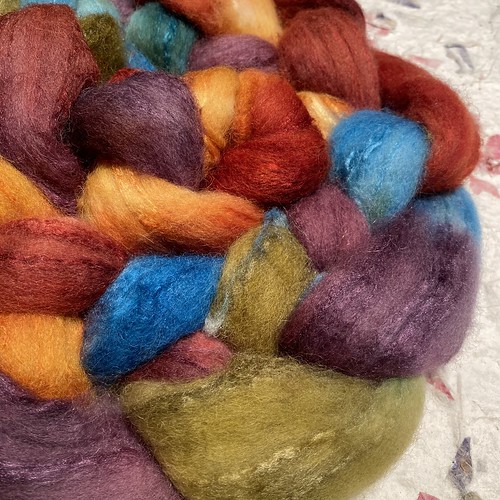
Ghost Town SOLD
 |
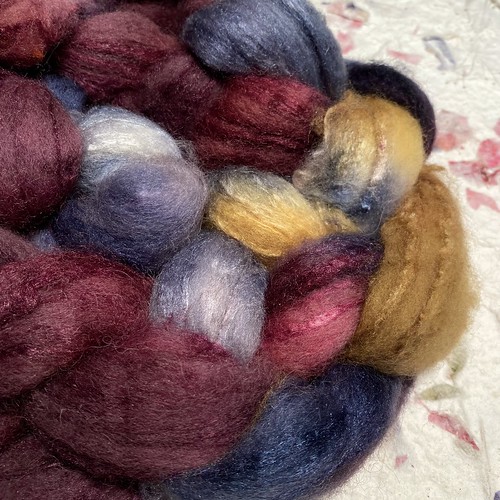
Peat Smoke and Whisky SOLD
 |

Star Dust over Lerwick SOLD


 |

Periwinkle
(a fabulous blue/Lavender and voted THE Colour of 2022)
SOLD
 |

Natural

 |

Bronze Age Party SOLD

 |

Romantic Vampires 4 LEFT

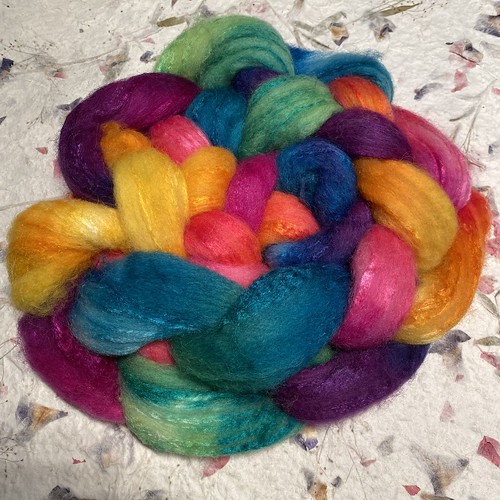 |

Flower Power 4 LEFT
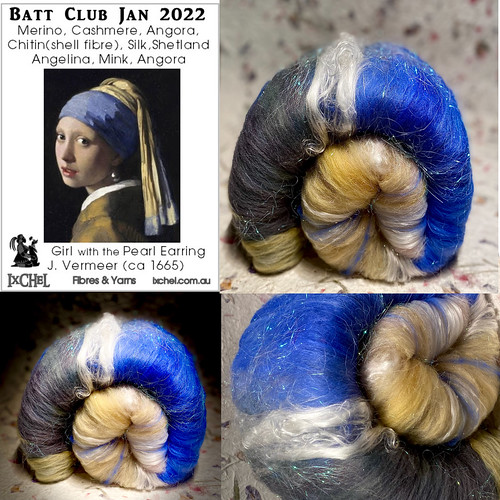 January 2022 Batt Club
January 2022 Batt Club
 January 2022 Fibre club
January 2022 Fibre club
 January 2022 Yarn Club
January 2022 Yarn Club
 June 2021Club
June 2021Club

 June 2021Club
June 2021Club
Note to all International club members:
All international club parcels are now being shipped with tracking and expedited.
There is an option if you want all three of your clubs to be shipped together to save on shipping cost: Just ask me for a postage quote !
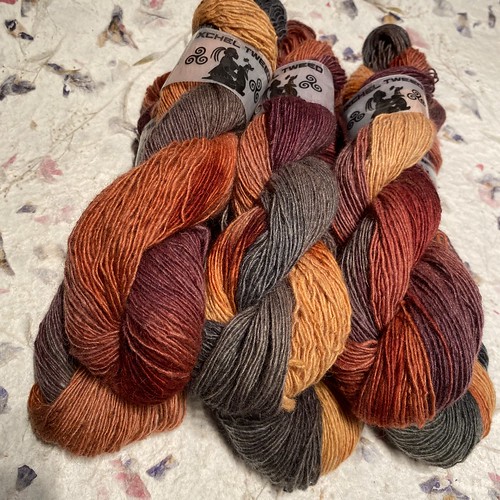
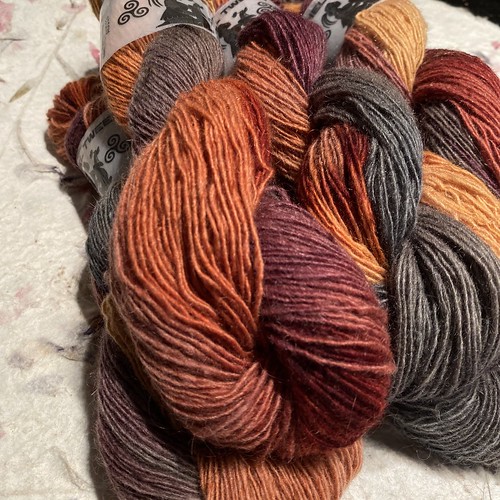
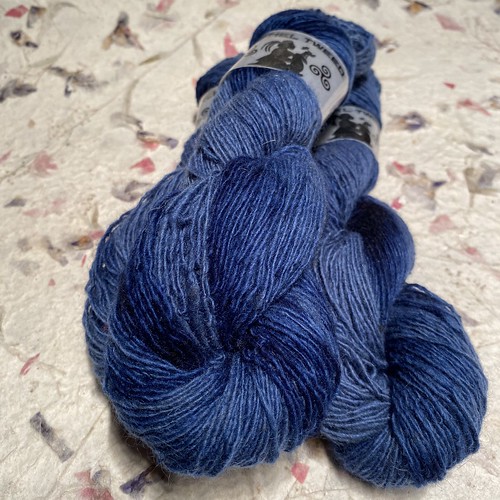






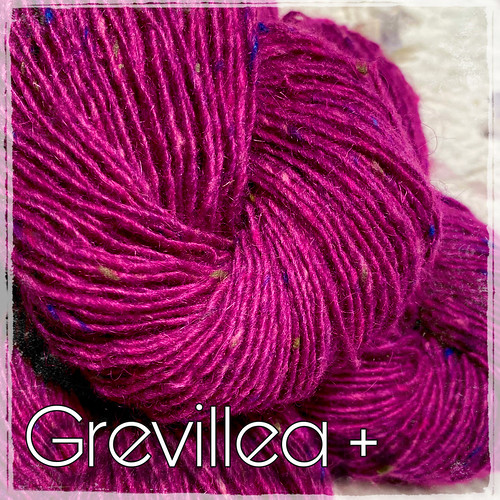

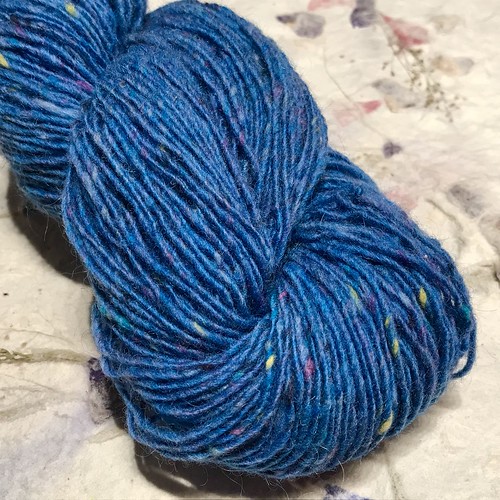
IxCHeL club sign ups for
April, May, June 2022
are now open !
Here are some photos of the previous clubs:
 January 2022 Batt Club
January 2022 Batt Club January 2022 Fibre club
January 2022 Fibre club January 2022 Yarn Club
January 2022 Yarn Club June 2021Club
June 2021Club
 June 2021Club
June 2021ClubNote to all International club members:
All international club parcels are now being shipped with tracking and expedited.
There is an option if you want all three of your clubs to be shipped together to save on shipping cost: Just ask me for a postage quote !
IxCHeL Fibre Club April, May and June 2022
The subscription is for a period of three months and you will receive one special hand dyed and special blended top/roving per month
All the tops will be hand dyed and will be especially made for the members of IxCHeL Fibre Club ! Price to join the IxCHeL Fibre Club #51 and receive your special hand dyed top :)) for three months (April, May and June 2022 ) is AU$78 + postage (parcel post or airmail). AND there are good value double and triple serves available !!!
For Australia : single serve $78+$30 postage (parcel post), double serve $150(save $6) +$30m postage or triple serves $225 (save $9!) + $30 postage
For New Zealand : single serve $78+$45 postage (parcel post) double serve $150(save $6) +$45 postage
For New Zealand : single serve $78+$45 postage (parcel post) double serve $150(save $6) +$45 postage
For USA + Canada: single serve AU$78+AU$60 (Airmail) double serve AU$150+AU$60; triple serve $225 (save $9) + AU$60postage
For UK,Europe, rest of the world: Single serve AU$78+AU$78 (airmail) Double serve AU$150+AU$78; triple serve $225 (save $9) + AU$78postage
For Asia: Single serve AU$78+AU$57 (airmail) Double serve AU$150+AU$57; triple serves $225 (save $9) + AU$57postage
If you want to receive a fibre surprise every month then join the IXCHEL FIBRE CLUB #51 now. Numbers are strictly limited ! Payment via direct deposit or credit card or paypal. Just PM or email me your details.
The IxCHeL Yarn Clubs April, May and June 2022
Every month for three months (April, May and June 2022 ) you will receive: enough hand dyed luscious yummy yarn to make a pair of socks or a lush shawl or scarf of course! (the hand dyed yarn will be exclusive for the Ixchelbunny SOCK-IT-TO-ME Yarn CLUB and will range from a sock weight yarn (a 4ply/fingering weight yarn); Every month a sock or scarf pattern, tips and instructions ! Now is that GOOD or is that GOOD ??!
I will even offer a double serve for those of you who like their socks or scarves extra long !
For Australia : single serve $96+$30 postage (parcel post) double serve $177( save $15!!) +$30 postage
For New Zealand : single serve $96+$45 postage (parcel post) double serve $177( save $15!!) +$45 postage
For USA + Canada: single serve AU$96+AU$60 (Airmail) double serve $177 (Save $15!!) +AU$60
For New Zealand : single serve $96+$45 postage (parcel post) double serve $177( save $15!!) +$45 postage
For USA + Canada: single serve AU$96+AU$60 (Airmail) double serve $177 (Save $15!!) +AU$60
For UK,Europe, rest of the world: Single serve AU$96+AU$78 (airmail) Double serve $177 (Save $15!!) +AU$78
For Asia: Single serve AU$96+AU$57 (airmail) Double serve $177 (= Save $15!!!) +AU$57
Numbers are strictly limited !
Payment via direct deposit or credit card or paypal . Just PM or email me your details
By the way: you don’t HAVE to knit socks if you don’t want to.. the hand dyed yarn is amazingly nice for scarves, cowls, beanies and even tops ! Anything goes Payment via direct deposit or credit card or paypal. Just PM or email me your details
IxCHeL Funky Bunny Batt Clubs April, May and June 2022
Here are all the details. Just pm me when you have any questions or want to be part of the funky bunny batt club Movement ;-) Welcome to the blingy dark side ;-D
The subscription is for a period of three months and you will receive one special hand dyed funky bunny batt per month to the value of AU$40 or more .
The batts will range in weight from 140grams to 170grams with luxury fibres like camel , angora, cashmere, silk, yak, llama even wallaby and bison, and rare breeds !!!! All the batts will be hand dyed and will be especially made for the members of IxCHeL funky bunny Club ! Every month you will receive a HUGE luxury funky bunny batt !
Sign up now and you will receive an IxCHeL Hand dyed , super luxurious funky bunny batt for April, May and June 2022
Price to join the IxCHeL Funky bunny for three months is :
For Australia : $114+$30 postage (parcel post)
For New Zealand : single serve $114+$45 postage (parcel post)
For USA + Canada: AU$114+AU$60 (Airmail)
For New Zealand : single serve $114+$45 postage (parcel post)
For USA + Canada: AU$114+AU$60 (Airmail)
For UK,Europe, rest of the world: AU$114+AU$78 (airmail)
For Asia: AU$114+AU$57 (airmail)
If you want to receive a fibre surprise every month then join the IXCHEL FUNKY BUNNY BATT CLUB now.
Numbers are strictly limited !
Payment via direct deposit or credit card or paypal. Just PM or email me your details.
To become a member just email me on ixchelbunnyart at gmail dot com or message me on facebook or Instagram. More on how to order the clubs and anything from this update later in the blog in the section “how to order”
IxCHeL Tweed Yarn
Hand dyed
Super soft lambs wool 70% and Kid Mohair 30%
Spun singles, fingering or sock weight yarn
+/- 200meters/218yards
50grams 1.76oz
AU$18
+/- 200meters/218yards
50grams 1.76oz
AU$18


Botanical dyes
(dyed with Eucalypt, Madder root, Walnut, Elderberry, Indigo,Acorn)
SOLD


Indigo 1 available


Jewels 2 available
NEW colours !!!
IxCHeL Tweed Yarn
Super soft lambs wool 70% and Kid Mohair 30%
Spun singles, fingering or sock weight yarn
+/- 200meters/218yards
50grams 1.76oz
AU$16


Nephrite Jade
(A beautiful deep sage green colour with fun blue, lime and salmon speckles)
SOLD
Making new batch soon!


Grevillea + new !
A vibrant raspberry pink tweed with deep purple, lime and soft pink speckles)
IxCHeL Tweed fingering weight yarn
Super soft lambs wool 70% and Kid Mohair 30%
Spun singles, fingering or sock weight yarn
+/- 200meters/218yards
50grams 1.76oz
AU$16


Great Barrier Reef




Leafy Seadragon




Flying Fox




Airlie Beach




Sea Mist





Amethyst


 Kata Tjuta BACK IN STOCK !!!
Kata Tjuta BACK IN STOCK !!!
(an intense pure red that goes well with the Kookaburra and the Wattle and the Amethyst colourway and soooooo many others)

 Kookaburra
Kookaburra
(a beautiful silver grey with ochre accents that complement the dingo colourway)

 Dingo
Dingo
( A beautiful warm honey ochre with pops of royal bluebell, kingfisher and kangaroo paw)

 Dusky Grevillea
Dusky Grevillea
(a gorgeous raspberry base with pops of royal bluebell, flowering gum, grey and daintree)


 Fern Forest
Fern Forest
( a deep forest green with accents of bright red, dusky purple and daintree) )

 Jacarandah
Jacarandah
( a fabulous deep purple with accents of royal bluebell, daintree, grevillea and kingfisher )

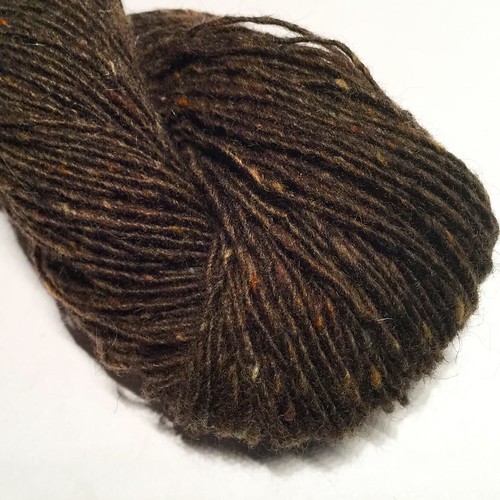 Wombat
Wombat
( a fabulous deep walnut brown with accents of dingo and kookaburra)

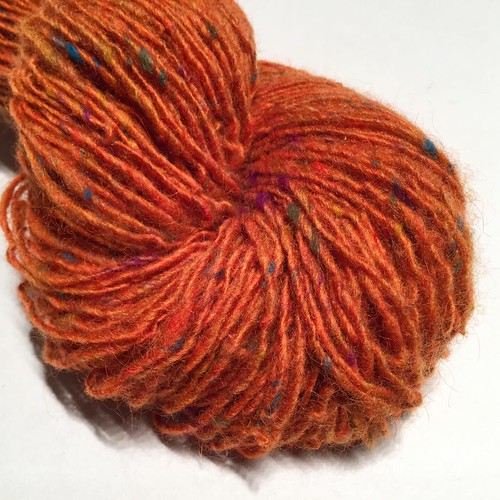 Kangaroo Paw
Kangaroo Paw
( a fabulous warm orange with accents of fern forest, royal bluebell and grevillea and dingo )


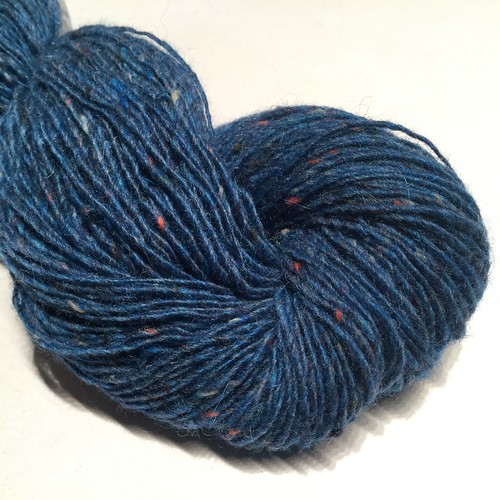 Royal Bluebell
Royal Bluebell
( a deep blue with accents of flowering gum, kookaburra and fern forest )

 Wallaby
Wallaby
( a warm light brown with accents of soft blue and kookaburra)

 Daintree ( a soft green with accents of fern forest and dingo)
Daintree ( a soft green with accents of fern forest and dingo)
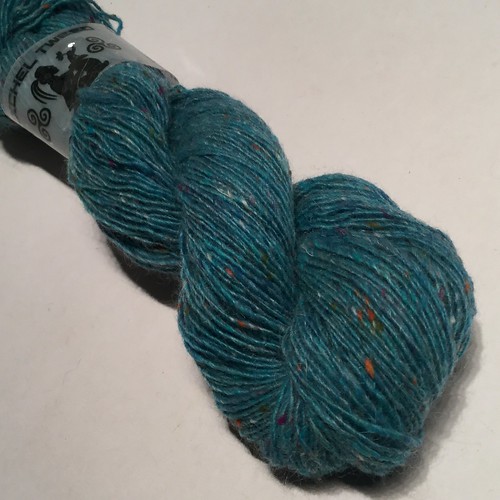
 Kingfisher
Kingfisher
( a fabulous Turquoise blue with accents of fern forest, kangaroo paw, Jacaranda and Grevillea)

Want to dye your own with easy to use acid dyes? I have been selling these Landscape dyes at my workshops and shows for a long time : They are extremely easy to use and come in great shades.

Wattle
(A beautiful sunshine yellow that goes so well with the kookaburra the silver grey)
(A beautiful sunshine yellow that goes so well with the kookaburra the silver grey)

 Kata Tjuta BACK IN STOCK !!!
Kata Tjuta BACK IN STOCK !!!(an intense pure red that goes well with the Kookaburra and the Wattle and the Amethyst colourway and soooooo many others)

 Kookaburra
Kookaburra(a beautiful silver grey with ochre accents that complement the dingo colourway)

 Dingo
Dingo( A beautiful warm honey ochre with pops of royal bluebell, kingfisher and kangaroo paw)

 Dusky Grevillea
Dusky Grevillea(a gorgeous raspberry base with pops of royal bluebell, flowering gum, grey and daintree)

Flowering Gum
( a gorgeous medieval warm red with bright red, kookaburra and fern forest accents)
( a gorgeous medieval warm red with bright red, kookaburra and fern forest accents)

 Fern Forest
Fern Forest ( a deep forest green with accents of bright red, dusky purple and daintree) )

 Jacarandah
Jacarandah ( a fabulous deep purple with accents of royal bluebell, daintree, grevillea and kingfisher )

 Wombat
Wombat( a fabulous deep walnut brown with accents of dingo and kookaburra)

 Kangaroo Paw
Kangaroo Paw ( a fabulous warm orange with accents of fern forest, royal bluebell and grevillea and dingo )

isn’t it gorgeous how the Kangaroo paw knits up?! )

 Royal Bluebell
Royal Bluebell ( a deep blue with accents of flowering gum, kookaburra and fern forest )

 Wallaby
Wallaby( a warm light brown with accents of soft blue and kookaburra)

 Daintree ( a soft green with accents of fern forest and dingo)
Daintree ( a soft green with accents of fern forest and dingo)
 Kingfisher
Kingfisher ( a fabulous Turquoise blue with accents of fern forest, kangaroo paw, Jacaranda and Grevillea)
(Out of stock but more coming soon !)
Landscape dyes

100g tubs AU$12
250 g tubs AU$27
250 g tubs AU$27
Just contact me with the name of the colour you are after and I will get right back to you.
All my contact details are here:
Please don't hesitate to contact me at any time if you have any questions okay? Any questions about custom orders: spinning or dyeing orders: Always happy to enable.
How to Order: email or message me on facebook, Ravelry or Instagram, quoting how many tops, yarns or clubs you would like, together with your postal and email address and I will get right back to you with all your order and payment details.
1. You can email me on ixchelbunnyart at gmail dot com or ixchelbunny at yahoo dot com dot au
2. Message me on facebook or
3. Message me on www.ravelry.com where I am ixchelbunny.
4. message me on Instagram where I am @ixchelbunny
2. Message me on facebook or
3. Message me on www.ravelry.com where I am ixchelbunny.
4. message me on Instagram where I am @ixchelbunny
Shipping : I am still working and mailing the parcels out fast as humanly possible :-) All orders received and paid for of the Friday updates, will be shipped first thing monday morning. We do daily post office runs (if necessary). The recent AusPost changes to parcel pickups from businesses therefore does not apply to us because WE deliver your parcel directly to our nearest AusPost hub.
Seeing that there are currently lots of Covid cases, especially in NSW ain VIC, there can be some AusPost sorting centres that do not have enough staff so there will be delays in getting the parcel to you. As soon as your parcel is shipped you will receive an automatic email from AusPost with the tracking number so you can see where your parcel is and the approximate ETA.
Overseas deliveries are highly impacted by the very low amount of planes out of Australia t the moment and the very high pressure on AuPost. Please be patient during these pandemic times. We do our utmost to keep everything running smoothly on our end and if you have any questions: please do not hesitate to ask. Always happy to help!
Stay safe!
Keep crafting !
Be Happy !
Stay Awesome !
Keep your eyes out for any news on the
ixchelbunny Instagram feed and the IxCHeL facebook page!!
Show the Love and Follow me on Instagram
RABBIT ON !
((hugs))
Charly

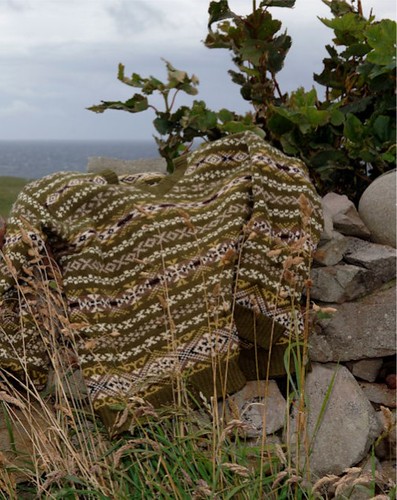




No comments:
Post a Comment